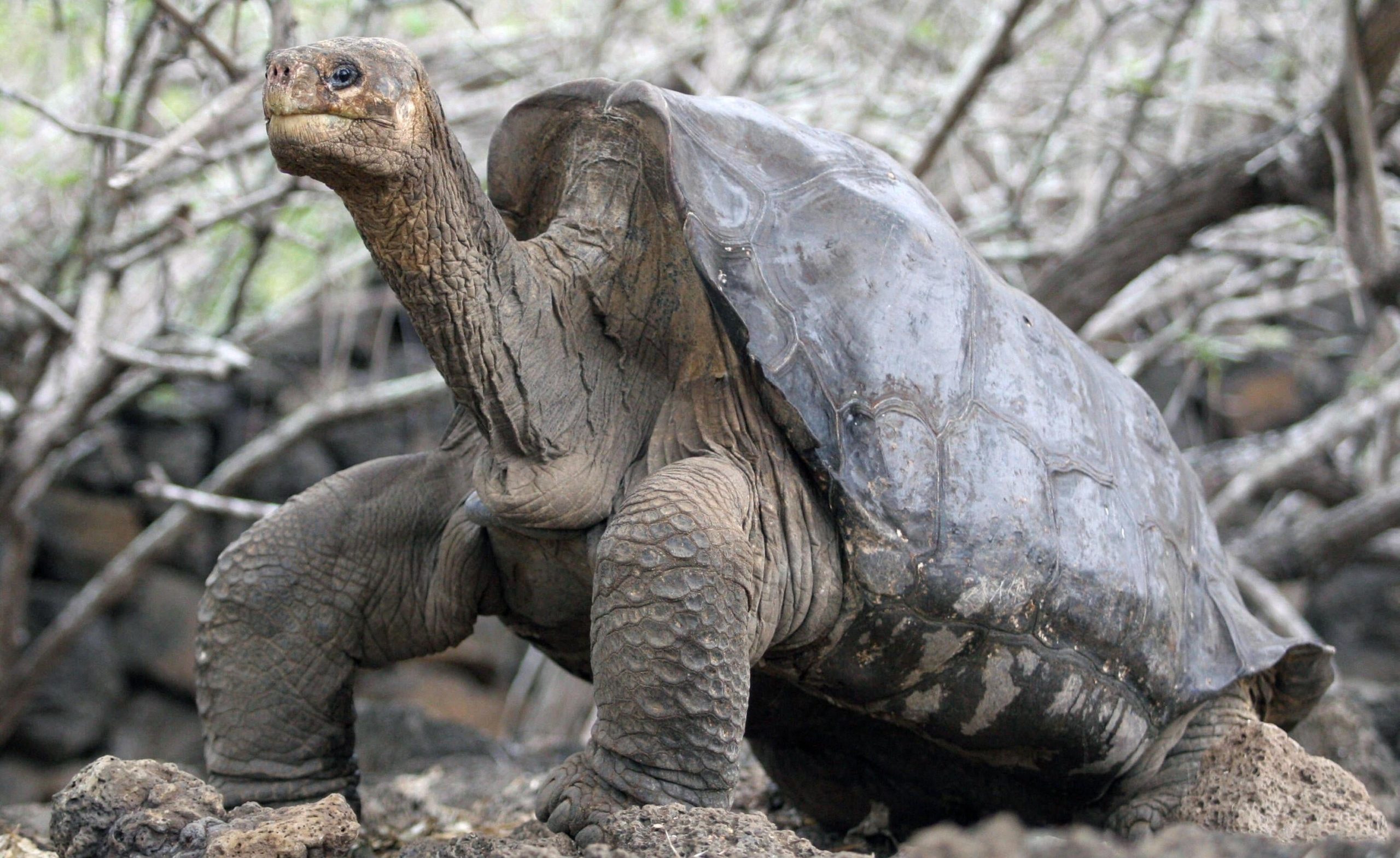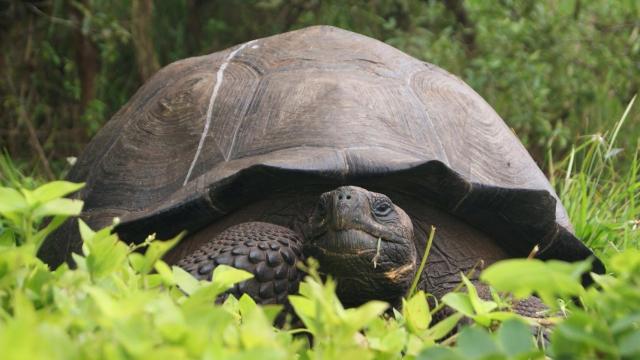Researchers in Ecuador have found a long lost friend. This week, government officials and conservation associations confirmed that a giant tortoise found three years ago belongs to a species that was previously thought extinct for a century.
“Hope is intact” for the species, the country’s head of the Ministry of the Environment and Water, Gustavo Manrique, tweeted.
Scientists from the Galapagos National Park and the Galapagos Conservancy found the big tortoise on a February 2019 trip to Fernandina Island, one of the Galapagos Islands. They nicknamed her Fern.
Upon discovering Fern, the researchers were pretty sure she was a member of the Chelonoidis phantasticus species, more commonly known as the Fernandina Island Galápagos tortoise. But they still had to confirm their hunch. To do so, they sent a blood sample from Fern to a genetics lab at Yale University, which officially confirmed their suspicions on Tuesday. Both teams of researchers were thrilled. Fern now resides in a wildlife conservation centre. In case you were wondering, she looks great, folks. Look at that cute little pink nose!
Tortoises of Fern’s species were thought to have been wiped out completely by volcanic activity on Fernandina Island. The last Chelonoidis phantasticus was spotted on the island in 1906. Since then, the volcano on the island has erupted 22 times.
Scientists are now trying to fund a series of research expeditions across the island to see if there are any more of these tortoises out there. They’re especially hoping to find a male who can be a mate for Fern and hopefully help save the species. If they’re successful, they plan to bring the dude tortoise to, uh, have a meeting with Fern at a breeding centre on Santa Cruz, an island in Ecuador’s Galápagos National Park. I’m blushing.
“One of the greatest mysteries in Galapagos has been the Fernandina Island Giant Tortoise. Rediscovering this lost species may have occurred just in the nick of time to save it,” James Gibbs, vice president of science and conservation at the Galapagos Conservancy and tortoise expert at the State University of New York, said in a statement. “We now urgently need to complete the search of the island to find other tortoises.”
Tortoises — especially these giant ones — play crucial roles in island ecosystems. They disperse seeds by eating them and pooping them out around their habitats, and when they move, their weighty bodies and flat feet clear paths that smaller animals use to move around.
The researchers are particularly anxious about their search because they’ve been here once before. In 1971, a biologist found a male giant tortoise of another variety that was thought to have died out, the Chelonoidis abingdoni species. Scientists nicknamed him Lonesome George, and the name turned out to be apt. Despite their efforts to find him a mate, the tortoise died in captivity in 2012, and researchers once again declared the species extinct.

“We desperately want to avoid the fate of Lonesome George,” said Danny Rueda Córdova, Director of the Galapagos National Park, in a statement.
The scientists have reason to have hope. On the 2019 expedition where they found Fern, park rangers at Galapagos National Park also found signs in the form of tracks and poop of at least two other tortoises hanging around the island. Hopefully, Fern won’t be Lonesome Fern.
